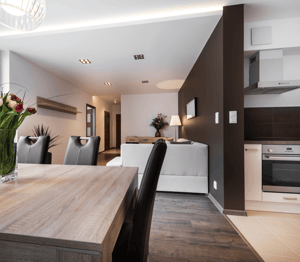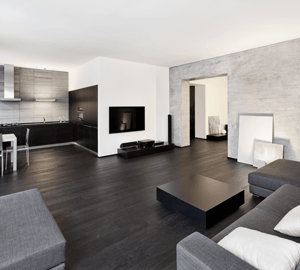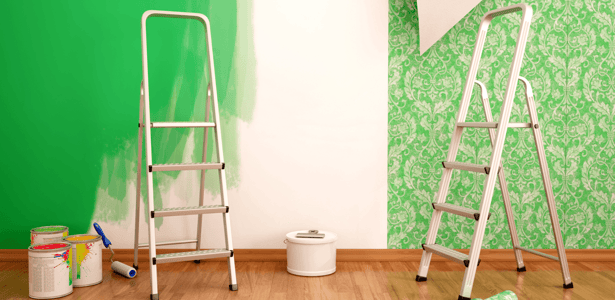A redecoration is often just what your home needs to look and feel fresh. Whether you’re thinking about changing a single room or doing something major, we’ve got some tips to help you feel more confident about choosing the right colours for your home. If you take these things into consideration, your home will look like you hired a professional designer.
How Far to Go
Think about what you already have in your home and how much you’re willing to change. Will you be buying new furniture or keeping the old? Do you have favourite pieces of art that you want to keep? If so, you’ll need to choose paint colours that go with the things that you have. For instance, a beige sofa might go well with a variety of colours, but a red sofa would clash with certain looks. If you don’t mind buying new furniture, the sky’s the limit.
The Psychology of Colours
Many believe that certain colours elicit distinct feelings, and you can use that to your advantage. Orange and yellow are energetic colours that might inspire creativity or spur you to action. They might be nice colours to use in a home office or child’s playroom, but they might be a bit too vibrant for the bedroom. Blue and green colours can make you feel calm and connected to the earth. They work well in bedrooms and living rooms. Purple can symbolize luxury, pink is romance, and red is passion. What feelings do you want to create in your home?
 Types of Colour Schemes
Types of Colour Schemes
Colour is more than what you see on the walls. You’ll also find it in furniture, artwork, and accessories. There are a few major schemes for choosing colours, but you’ll have to break out the old colour wheel that you used in art class (or just use this one).
Monochromatic schemes focus on a single colour but maintain variety by using different shades of that colour. Complementary schemes use two colours that are opposite of each other on the colour wheel, such as blue and orange. In general, these complementary colours should be from the same shade family. Analogous colour schemes use colours that are next to each other on the colour wheel, such as red, orange, and red-orange. The triad scheme uses colours that form a triangle on the wheel. Often, this means mixing several bright colours, so you may need to temper that by incorporating plenty of neutral colours.
The “Dark to Light” Colour Trick
If you mentally divide your room horizontally into thirds, you should keep dark colours toward the bottom of the room and lighter colours at the top. For instance, let’s say that you’ve chosen a monochromatic colour scheme for the bedroom using blues. Your area rug might be predominantly a dark blue, while the comforter is more of a royal blue, and the walls are a light blue.
 Create Warmth or Coolness
Create Warmth or Coolness
Certain colours will make a room feel warm, while others give the room a cool feeling. Which style do you prefer? Reds, oranges, and yellows tend to be warm. These would be a good choice if you want a cozy space in the living room. But if you’d prefer a bright and airy feeling for this room, you’d probably want the cool colours: blue or green.
The 60-30-10 Principle
The 60-30-10 principle is a good way to create a design that feels really put-together. This is the ratio of colours that you’d use once you’ve picked three colours that you like. Use your main colour in about 60 percent of the space; the secondary colour in about 30 percent of the space; and the third colour in about 10 percent. Usually, people select a somewhat neutral colour for the primary colour. Bright colours might be too overpowering if they’re used in 60 percent of the space. However, sometimes making a bold decision pays off.
Start Small
Choosing colours for a redecoration can feel overwhelming. If you’re a little nervous, it’s smart to start with a small room, like the half-bathroom or a kids’ room. This gives you some practice in a way that’s not too expensive. You simply need a fresh coat of paint and a few new accessories. Once you see how fabulous those rooms look, you’ll be ready to take on a bigger challenge, like the living room or the master bedroom.
Choosing colours for your redecoration should be fun, not challenging. If you ever need some help with your selections, the staff at your local paint store should be able to offer you some great advice.




